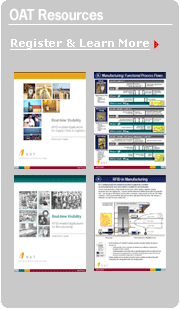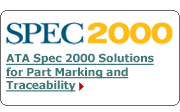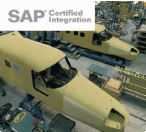Tool Tracking with RFID and RTLS: Deployment Considerations
A missing or out-of-spec tool can derail a production schedule. As a result, many manufacturers are using RFID and RTLS technology to enable real-time location and maintenance status at tool stores. Automating tool tracking processes with RFID/RTLS can range from an RFID-enabled tool box or tool crib to an RTLS (Real-Time Location System) for tracking tooling across a manufacturing facility.
![]() Deployment Considerations:
Deployment Considerations:
What Types of Tools Are Being Tracked? The word "Tool" can refer to any number of indirect materials in a manufacturing environment. Some tools require little or infrequent maintenance while others are subject to stringent management and maintenance processes. Some tools can fit into an RFID-enabled toolbox, vending machine or crib, while others may be freestanding production tooling (e.g. a laser scriber, a lift table or mold for composite materials). Tools in certain environments may present a high FOD risk (Foreign Object Debris/Damage) and must be tracked very closely.
What Do You Need to Know About the Tool? For larger tools, knowing a general location may be enough, while locating smaller tools, or tools with high FOD potential requires more precision. Most specialized tools have calibration schedules which need to be tracked, to ensure they are in spec. Composite tooling is exposed to extreme temperatures which need to be tracked along with usage life. Any government-owned tools (Right-of-Use) used by defense contractors must be flagged at such, since they cannot be used for commercial activities and are subject to inspection at any time.
Which Adjacent Processes are Impacted by Tool Tracking? Tool Tracking is usually not an end in itself, since it often impacts adjacent processes, such as Work-in-Process Tracking, Program/Contract Management, Materials Management and Field Service Management. When tracking Work-in-Process, for instance, the usage of a specific tool (e.g. a drilling tool) often represents a process step. In turn, the Work Order generally specifies a specific tool/procedure for each step. Creating process maps with adjacencies prior can facilitate a Tool Tracking deployment while paving the way for greater efficiencies down the road.
What Tracking Data Needs to be Shared With Your Enterprise Systems? By enabling business processes processes with RFID, enterprise systems are better informed, more up-to-date and more integral to daily operations. Real-Time Tool Tracking data may inform an ERP, Program Management or MRO system, making end-to-end manufacturing and logistics processes more efficient. For instance, if a tool is associated with a specific step in the assembly process, the WIP Tracking system can be informed when the tool is checked out and update the production status. Many manufacturers and service providers have realized significant benefits from tracking Work-in-Process and Tools in tandem, enabling a real-time view of customer orders, program completion and working capital allocation.
Automating Tool Tracking processes with RFID and/or RTLS has proven to increase efficiency in manufacturing and service operations Considering multiple factors beyond a specific tool set, process area or tool store can lead to greater benefits in quality, capital allocation, on-time delivery and risk mitigation.
Learn More:
Blueprint for Success: Tool Tracking - includes planning considerations and checklists for Tool Tracking deployments.
![]()
Apparel
Aerospace & Defense
Automotive
Chemicals
Consumer Products
Industrial
Machinery & Components
Oil and Gas
OAT
SOLUTIONS SUPPORT: Barcode - Passive RFID - Active RFID - Ultra Wide Band RF (UWB) - Wi-Fi - RTLS - RFID-enhanced EAS - Location Servers - GPS - Application Sensors (e.g. Stack Lights, PLCs, alarms...) |
||







 OAT Foundation Suite
OAT Foundation Suite






